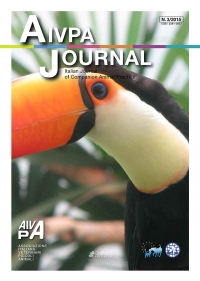Blue-green endoscopy in canine digestive neoplastic conditions
two cases
Authors
Cerquetella M., Spaterna A., Tesei B., Mengoni C., Meligrana M., Rossi G.
School of Biosciences and Veterinary Medicine, University of Camerino, Matelica (MC), Italy
Summary
Two dogs - one presenting with soft stools for one year and the other vomiting for about a week - were examined at the University Veterinary Teaching Hospital, Camerino University. After clinical evaluations and laboratory tests, both dogs underwent firstly an abdominal ultrasonography, and subsequently a digestive endoscopy (colonoscopy and esophago-gastroscopy, respectively).
In case 1, the ultrasonography revealed the presence of markedly enlarged mesenteric lymph nodes and an abnormal colon, presenting irregular mucosa, wall thickening, and in some points, loss of wall layering, while in case 2, a thickening of the gastric body wall and a loss of wall layering. Endoscopically (performed using an endoscope provided with a single blue + green (BG) filter, restraining wavelengths from 400 to 550 nm), in case 1 (using a white light endoscopy) the mucosa of the whole descending colon appeared irregular, in some tracts even nodular, and hyperemic; many diffusely interspersed erosions were also present; in case 2 (using a white light endoscopy), many ulcers were found at the level of the passage between the gastric body and the antrum. In both cases, with the BG endoscopy, lesions of the mucosa and bleeding areas were visible in dark blue and the lesions appeared to be more clearly defined from the remaining mucosa compared to when using a white light endoscopy. Histopathology revealed in case 1 (samples from lymphnodes and colon) a B associate high-grade lymphoma – large cells – B form (transmural type), while in case 2 (samples from the stomach) pathologic ulcers associated with a non-signet type, intestinal type, gastric adenocarcinoma.
To the author’s knowledge, information regarding this endoscopic technique in veterinary medicine literature is absent; nevertheless, even if in our cases the lesions appeared to be more clearly defined with a BG endoscopy, many further studies are needed in order to determine the clinical, endoscopic and pathological significance in canine colonic and gastric neoplastic infiltrates, of this technique.
Keywords
endoscopy, blue-green, digestive neoplasia, dog


